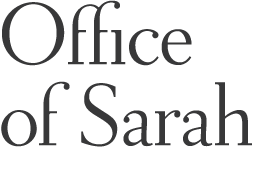Politics: Municipal Edition (Part 1)
Okay, so it’s not Friday. Navigating and researching this week’s blog post took me a few days longer than anticipated. Turns out even our Municipal system of government, and its politics, are not as straightforward as the uninitiated (me) might think! Instead of a Late Friday Post I’m re-framing this a Monday Blog Post Surprise. You’re welcome!
Like I mentioned last week, I will be starting locally and working my way out (Municipal, Provincial, Federal, and beyond!). Today’s post takes an introductory look at Edmonton’s Municipal government, asking how it’s organized and what the “politics” of this system looks like.
Before we get into any municipal specifics, I need to clarify (for myself as much as anyone else) how politics and government relate to each other in general, because I’m gonna be real, I find these two terms hella confusing.
Government vs. Politics
Wikipedia says that a government is a system or group of people who “govern” or “lead” a bunch of other people who happen to be located in a certain area (divisions of land, in the European tradition we’re familiar with here in “Canada”, have been decided by huffy self-important men drawing lines in the sand, putting up flags, drafting maps and conveniently labeling the best bits “Property of England”, or similar). Governing is basically rule-making and rule-enforcing. At the national level, these rules are often based off an agreement called a “constitution”, which outlines the principles, philosophy, and social norms that serve as a foundation for decision-making. Kind of like a company’s Mission Statement, except with more gravitas.
For instance! A cat government (Fluffy and friends) might declare the blue couch “Fluffy Land”, and create a law (the act of governing) mandating that the Dancing Fish Catnip toy MUST remain on its cushions, lest you be scratched, based on the constitutional right of all cats in Fluffy Land to have the free and ongoing right to catnip.
Okay, so government = a bunch of cool cats making rules based on a cat-load of fundamental principles, rights, and systems outlined in many long and serious Catstitutional documents. Got it.
Next question: where does politics fit into government? Merriam-Webster offers a nice, extra-super clear definition which declares that politics is “the art or science of government”. Ha. I just love that no one will commit to a direct answer even in the dictionary definition (on second thought, maybe that sounds like the perfect definition for politics). For actual clarity, Harold Lasswell interprets politics as guiding or influencing “who gets what, when, and how”.
Going back to our Fluffy Land example, one could say that Fluffy (Leader of Fluffy Land) is constantly engaged in politics, determining who (Fluffy) gets what (catnip), when (always) and how (via access to the couch of Fluffy Land). Now, perhaps a cat named Whiskers comes onto the scene and thinks that other felines are not getting the catnip rights they deserve. So Whiskers might engage in politics so that he can become part of the cat government and have some influence on how Fluffy Land catnip policies are interpreted (is it for all cats equally, or especially cats named Fluffy? How much catnip access is required to satisfy the “free and ongoing right”? So many questions).
I’m thinking about it like this: governmental systems are what you inherit, and politics is how you change what these systems are doing.
It’s worth noting that the capital-G Government (“The Government”) is made up of both politicians (who are voted into office) and administrative bureaucrats (who are non-elected, apolitical government employees). In cat governments, the latter are obviously called bureaucats, and no I’m not sorry for this joke.
Yaay! I think I’ve got gov vs. politics figured out! Do you? Are we ready to move on?!
How Municipal Government Works
The federal government decides what the provincial government has power over, and the provincial government decides what powers its municipalities will have jurisdiction over. It’s kind of like Alberta is a (single) parent and its cities are its brood of children (and with its blue parent currently in charge, Edmonton is definitely not the favorite child). According to the Alberta Urban Municipalities Association (AUMA), the Municipal government of Edmonton is in charge of providing certain services and functions such as:
City planning & development (zones, buildings and roads)
By-law creation & enforcement (apparently the word bylaw comes from Old Norse and means "town law" - who knew?!)
Parks, recreation centres, libraries, museums
Public transit
Garbage, water & sewage systems
Police & fire services
Since 1904 (when Edmonton became a city), our Municipal government has made sure we have stuff like streets, running water, public transit, and services like firefighters and police. Our city does NOT deal with education, hospitals or highways. That’s Provincial Parent stuff (which we will look at in the coming weeks, I promise!). The City of Edmonton has more than 12,000 employees (wow!) who make sure all these things happen. These employees are managed by 7 Deputy City Managers, who are under the management of the City Manager, who is appointed (along with the City Auditor) by City Council. In Edmonton, City Council consists of a Mayor and 12 elected City Councillors (like Jesus and the 12 disciples, except in this case the Mayor holds way less power, both of the miraculous and calling-the-shots varieties). According to AUMA, Council is responsible for two main things:
“developing and evaluating programs and policies;
making sure that municipal powers, duties and functions are appropriately carried out”
City Council manages the above responsibilities via council-only Committees. There also many Civic Boards (20+) where regular ol’ citizens can serve (translation: volunteer) and provide recommendations to Council.
Want to serve on one of these Civic Boards? Within the Office of the City Manager there exists the Office of the City Clerk (seriously, the City of Edmonton is like the Babushka nesting doll of Offices). The Office of the City Clerk are the people who manage applications and then shortlist board applicants (yes, you have to apply and interview for a volunteer board position), and then City Council interviews applicants and ultimately decides who gets on these Boards.
Here’s a handy little flowchart showing how this all looks, at a basic level:
Seems pretty straightforward(ish), despite the nesting-doll Office situation, right? To summarize: the people of Edmonton elect City Council, who hires the City Auditor and City Manager, who hires the Deputy City Managers, who hire city employees, who look after doing all the city-related things. The City Manager keeps all the programs and policies running along smoothly, the City Auditor keeps an eye on how efficiently all these programs are working, and City Council makes policy changes, as deemed necessary. Helping out Council, we’ve got a bunch of volunteer citizens serving on various Civic Boards. Easy-peasy! Right? Not so fast, my sweet little nascent political tadpole. I think this is where we cross over into…
How Municipal Politics Works
Remember our good friend Harry L. who said that politics is about controlling “who gets what, when, and how”? This is where (as they say) shit gets interesting.
Let’s take the Edmonton Police Service (EPS), for example. The EPS is a service provided (paid for) by the City of Edmonton (i.e. paid for by us and our municipal tax dollars!). The Edmonton Police Commission is a civic board made up of two City Councillors (currently Ward 5’s Sarah Hamilton and Ward 9’s Tim Cartmell) and 9 citizen members. Its purpose is to “oversee” the EPS, including hiring the Chief of Police. So far so good, right? Following our municipal system of government like a dream. Indeed, hiring the Chief of Police seems straightforward enough (which just happened recently in 2019). But “overseeing” the EPS is where things get a little more complicated.
For example. You can submit a complaint about the EPS directly to the Commission. But the complaint is then immediately forwarded to the Chief of Police, who forwards it to be processed and dealt with internally by the EPS via their “Professional Standards Branch”. Which means the police are investigating themselves… kind of like telling a student to mark their own essay (A+ gold stars for everyone!). Even if the EPS’ Professional Standards Branch finds a police officer guilty of something (let’s say, oh, that this police officer lied about their use of force in a police report, which a public video later reveals to be much more violent than he’d initially claimed, and so he’s suspended without pay…), the Edmonton Police Association (which is the police union, whose sole goal is to advocate for its members) might intervene and pressure the EPS to do it the “old way” (which is, apparently, to “punish” the officer by suspending them with pay??!). In the case of more serious complaints, EPS officers might get investigated by the Alberta Serious Incident Response Team (ASIRT). Great! Finally an independent system of review, right? Interestingly, Alberta’s entire team is all former law enforcement officers. So, once again, we have the police investigating themselves.*
To summarize: we’ve got our independent civic board (the Edmonton Police Commission) supposedly “overseeing” the EPS, but when we look at the politics of the situation, it’s the police who control the who, what, when, and how of policing oversight (via their Professional Standards Branch, the Edmonton Police Association, and ASIRT).
Think that’s the whole picture of law enforcement in Edmonton? Allow me to further complicate the picture. Just because the Edmonton Police Commission “oversees” the EPS doesn’t mean they’re overseeing ALL the law enforcement stuff happening in our city. For example, Edmonton Peace Officers (like Transit Peace Officers) are a completely separate unit, hired by the City of Edmonton rather than EPS (although it seems it’s the EPS who investigates complaints against Peace Officers, like in this 2019 case?). In addition, you have programs like the School Resource Officer (SRO) Program, which is implemented by EPS, but the power over its implementation rests with School Board Trustees (rather than the Edmonton Police Commission), as we can see here, in the current fight to suspend the SRO program.*
Politics! What a REAL DREAM, right? There’s a reason that Politics and Power are linked, and it goes deeper than the cute alliteration. Because whoever is controlling the who, what, when, and how is controlling the situation, regardless of what some tidy little Police Act bylaw states.
Our role as active citizens who give a shit.
Now that we’ve got a basic idea of what our Municipal Government does and how politics influences its programs and policies, the question is how do we, tiny little political tadpoles that we are, influence ANY of this in a significant way?
THAT is the question I’ll be looking at answering in next week’s blog post!
*If you’re looking for some good resources and existing research on the Edmonton Police, I highly recommend you check out Bashir Mohamed’s Edmonton Anti-Black Racism Tool Kit, which I have found very informative and useful.






